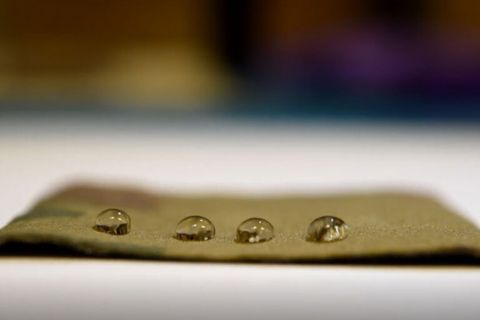Despite the potential risks to human health posed by PFAS, the lack of alternatives to the substances – particularly for rendering surfaces impervious to oil – means that they remain ubiquitous both in consumer products and in protective clothing worn by such as firefighters(1).
A Professor at the University of Toronto, Kevin Golovin, says: "What we have seen in the literature, and even in the regulations, is that it is the longest-chain PFAS that are getting banned first, with the shorter ones considered much less harmful. Our hybrid material provides the same performance as what had been achieved with long-chain PFAS, but with greatly reduced risk."
The coating developed by Golovin and his team is based on the biocompatible polymer polydimethylsiloxane (PDMS, commonly referred to as silicone). PhD student Samuel Au continues: "Unlike typical silicone, we bond short chains of PDMS to a base material; you can think of them like bristles on a brush. To improve their ability to repel oil, we have now added-in the shortest-possible PFAS molecule, consisting of a single carbon with three fluorines on it. We were able to bond about seven of those to the end of each PDMS bristle."
Under microscopy, the structures resemble the fletching on an arrow. As such, the researchers call their process nanoscale fletching.
The team deposited a coating of the PDMS on a piece of fabric, then placed drops of various oils on it to see how well it could repel them. On a scale developed by the American Association of Textile Chemists and Colorists (AATCC), of Research Triangle Park, North Carolina, the coating achieved a grade of 6, placing it on par with many standard PFAS-based coatings.
Golvin claims that the ultrashort-chain PFAS used by his team do not bioaccumulate. The researchers now want to work with manufacturers of non-stick coatings who might wish to scale-up and commercialise the process. In the meantime, they will continue working further more alternatives.
Golvin concludes: "The holy grail of this field would be a substance that outperforms [polytetrafluoroethylene], but with no PFAS at all. We are not quite there yet, but this is an important step in the right direction."

